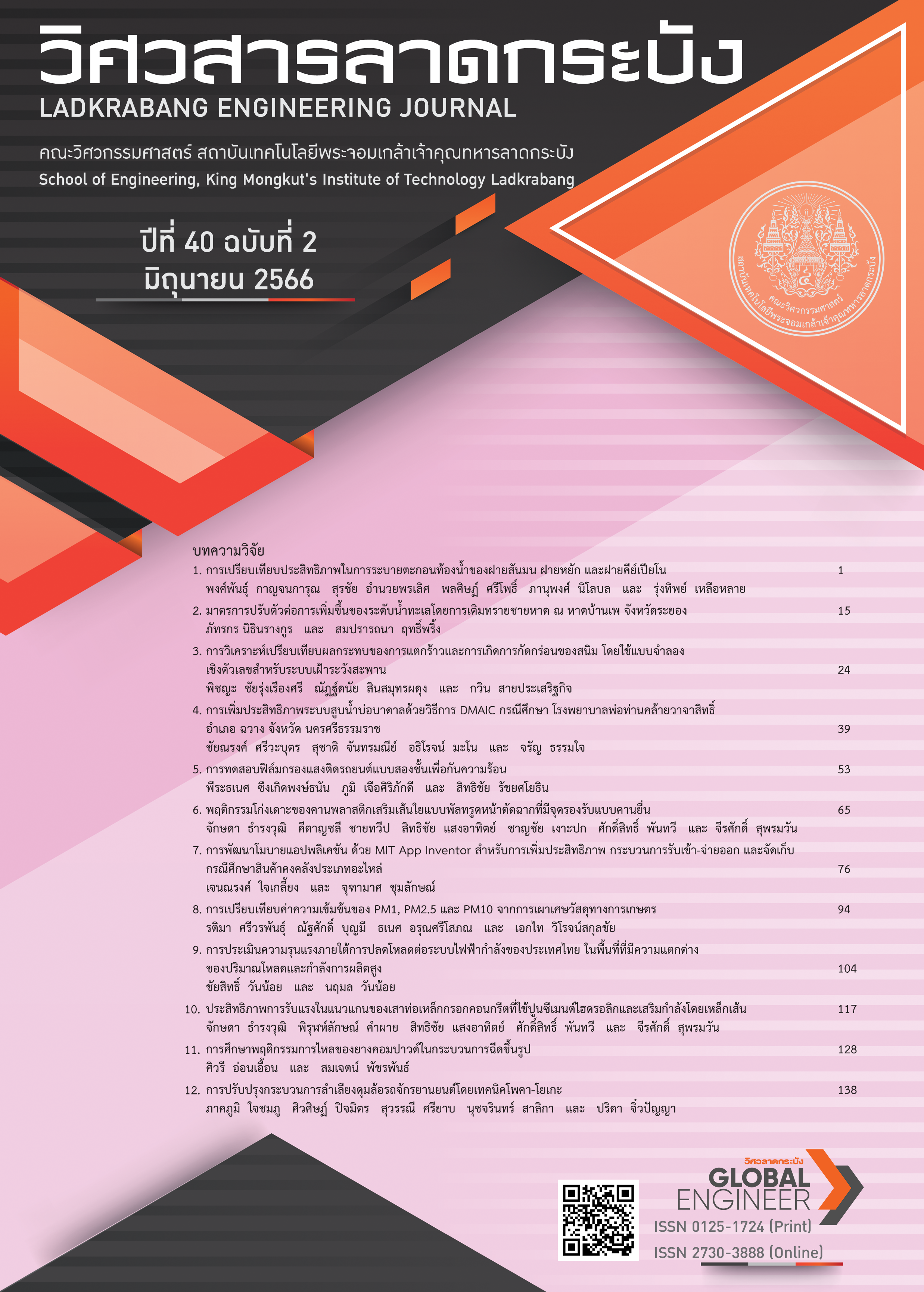Optimization of Artesian Water Pump Systems by DMAIC Method Case Study: Porthanklaivajasit Hospital, Chawang District, Nakhon Si Thammarat Province
Keywords:
Rework, Deep Well Pump, DMAIC, Pumping Systems, EfficiencyAbstract
This research aims to increase the efficiency of artesian water pump systems by DMAIC method; A case study of Porthanklaivajasit Hospital, Chawang district, Nakhon Si Thammarat Province, which consists of determining the problems, measuring to determine the cause and gathering data, analyzing the problems and the causes for better work development, and controlling procedures. The result of experiment was compared before and after of the well water pumping system. The experimental results showed that it can increase the productivity of the groundwater pumping system by installing timers, automatic on-off relays, which reduce the time of the work process from 295.45 min to 256.95 min, it can be reduced to 38.5 min. Previous studies have shown that the groundwater pump works for 30.50 h and produces 15.19 cubic meters of water and after the improvement of the groundwater pumping system, the total working time was 11.50 h, the amount of obtained water was 16.11 cubic meters, which could reduce the time system for 19 h and increase the amount of groundwater by 0.92 cubic meters, respectively. Additionally, the cost of electricity and water can be reduced. The DMAIC analysis process can also be used as a guideline to increase productivity in other industries as well.
References
World Wide Fund for Nature. “Freshwater.” WWF.or.th.https://www.wwf.or.th/_our_work_th/freshwater_th/ (accessed: Apr. 15, 2022).
Department of Groundwater Resource. “Groundwater.” dgr.go.th. http://www.dgr.go.th/th/intro (accessed: Apr. 15, 2022).
S. Sornnarindra and S. Sukto, “Reduction of Sewing Thread Stock by DMAIC Concept in Garment Industry,” in Proc. Industrial Engineering Network Conference 2018, Ubonratchathani, Thailand, Jul. 23–26, pp. 47–52.
C. Nakvachiratrakul, K. Pipatpanyanukul, R. Sukhasem and M. Chankham, “Implementing the DMAIC for defect reduction in the aircraft parts manufacturing,” in Proc. Industry Engineering Network Conference 2018, Ubonratchathani, Thailand, Jul. 23–26, pp. 227–231.
K. Wangkhahad and N. Kuptasthien, “Defect reduction in gear production: a case study of motor component manufacturing,” Journal of Engineering, RMUTT, vol 2, no. 2, pp. 29–41, 2014.
P. Panumpai and D. Thawesaengskulthai, “Defect reduction for evaporator product in automotive industry using six sigma approach DMAIC,” Research and Development Journal, vol 22, no. 2, pp. 56–64, 2011.
S. Chitphutthanakul, K Chantasit, K. Muisee and N. Pongthong, “Solar energy borehole pumps for self-reliance in Anubankohkood school, Trat province,” Rajabhat Rambhai Barni Research Journal, vol 13, no. 2, pp. 5–16, 2019.
R. D. Bothe, “Statistical reason for the 1.5σ Shift,” Quality Engineering, vol. 14, no. 3, pp. 479–487, 2002, doi:10.1081/QEN-120001884
K. Ploypanichcharoen, “Graph methods for presentation,” in Statistics for Engineering Book 1, 10th ed., Bangkok, Thailand:Technology Promotion Association (Thai-Japan), 2011, ch. 4, sec. 4.4, pp. 51–100.
K. Pipatpanyanugoon, “Process analysis and method of works,” in Work Study, 2nd ed., Bangkok, Thailand: Metri Publishing House, 1992, ch. 5, sec. 5.2, pp. 55–93.
P. Saenpakdee, “Fish Bone Diagram & Mind Map®.” prachasan.com. http://www.prachasan.com/mindmapknowledge/fishbonemm.htm. (accessed: Aug. 18, 2022)
Downloads
Published
How to Cite
Issue
Section
License
Copyright (c) 2023 Faculty of Engineering, King Mongkut’s Institute of Technology Ladkrabang

This work is licensed under a Creative Commons Attribution-NonCommercial-NoDerivatives 4.0 International License.
The published articles are copyrighted by the School of Engineering, King Mongkut's Institute of Technology Ladkrabang.
The statements contained in each article in this academic journal are the personal opinions of each author and are not related to King Mongkut's Institute of Technology Ladkrabang and other faculty members in the institute.
Responsibility for all elements of each article belongs to each author; If there are any mistakes, each author is solely responsible for his own articles.






